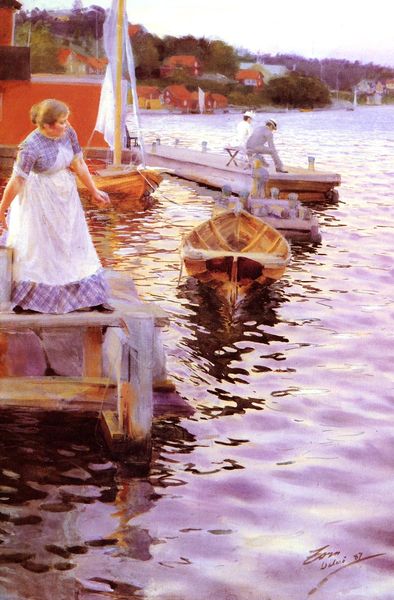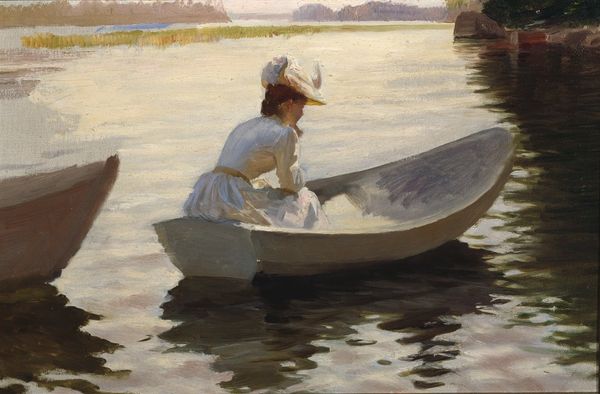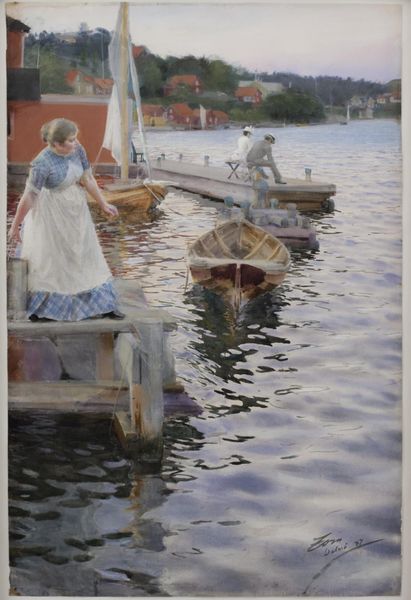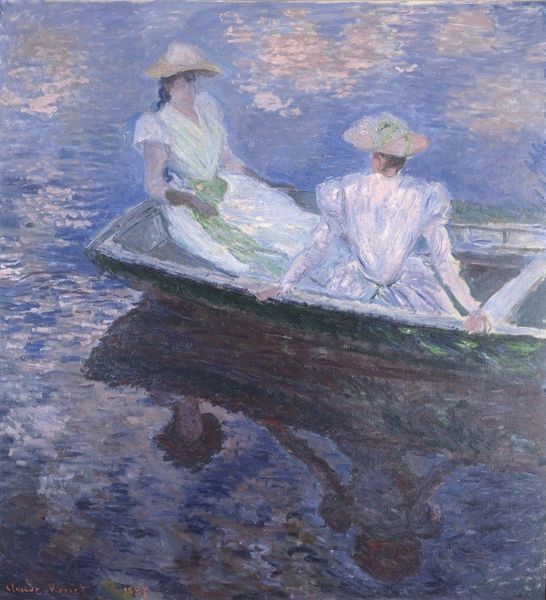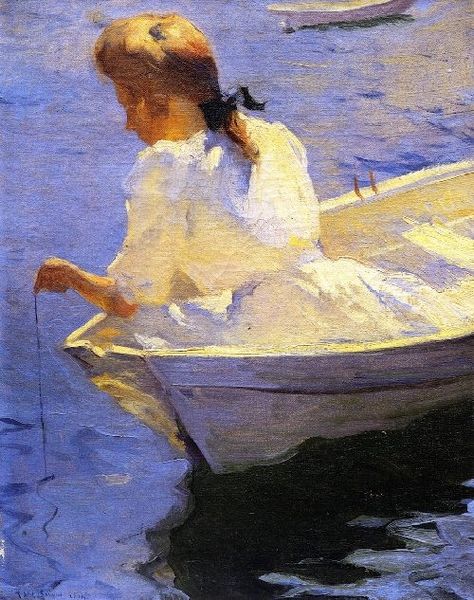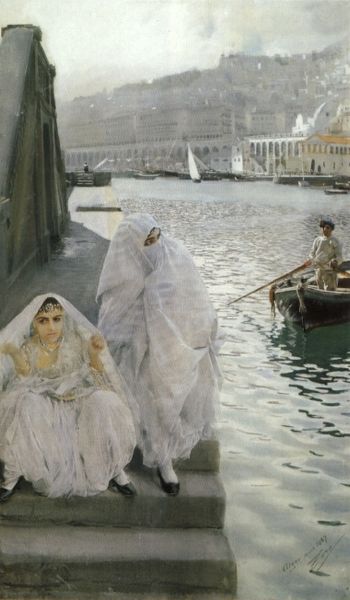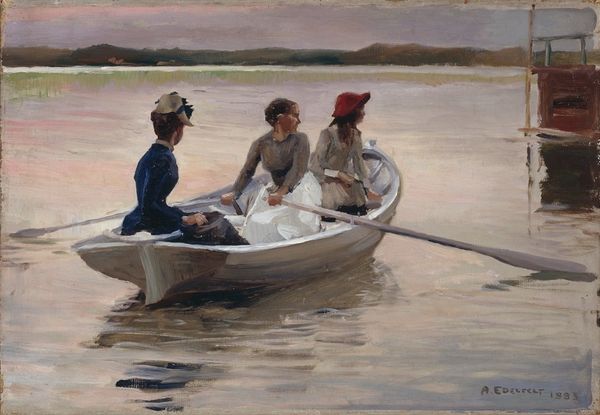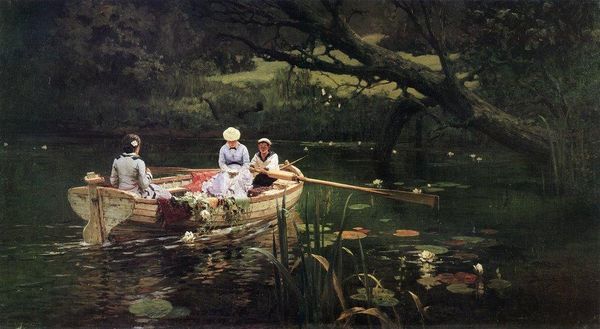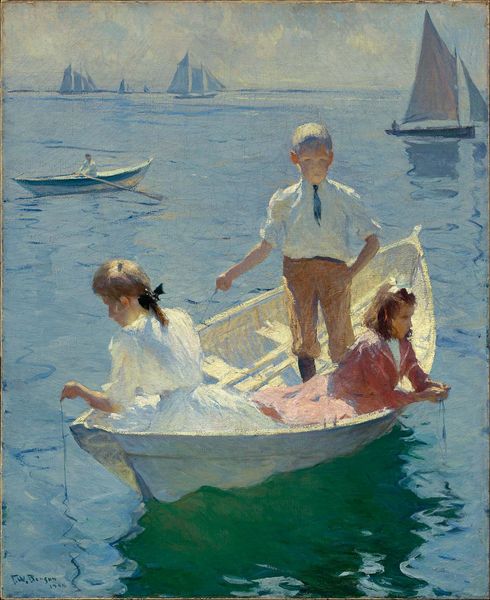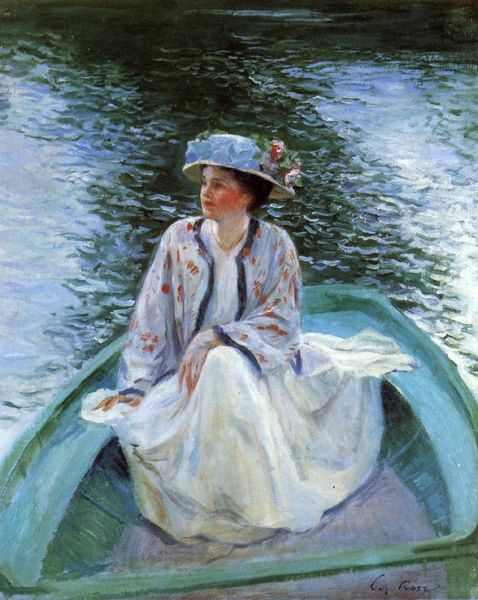
#
figurative
#
green tone
#
possibly oil pastel
#
oil painting
#
underpainting
#
muted green
#
surrealism
#
surrealist
#
green and neutral
#
watercolor
#
warm toned green
Copyright: Public Domain: Artvee
Curator: Anders Zorn created this artwork in 1886, giving it the Swedish title "Sommarnöje," which translates to "Summer Pastime" or "Summer Entertainment." Editor: It strikes me immediately as a very tranquil scene. The cool, muted palette—mostly grays and greens—creates a calm, almost melancholic mood, despite the implied activity. It almost feels staged somehow, a tableau. Curator: Zorn often depicted scenes of everyday life, capturing the social dynamics of his time. It depicts a woman in a white dress, possibly upper class, standing on a dock as a man rows a small boat toward her. These aren't idealized figures; there is an air of realism. Note how light plays on the woman's dress and the water's surface; light was definitely a topic of interest to him. Editor: The water is indeed quite symbolic. Water represents change and reflection; the rower heading toward the woman could represent a transition or turning point in their relationship. White traditionally represents purity or innocence. Are we to assume something of that kind on display, or is the contrast of her white garments against the drab scene designed for her figure to draw the viewer in? Curator: Well, that interplay is important; Zorn certainly understood the dynamics of wealth. There's a fascinating push-and-pull. The woman's dress indicates privilege, perhaps even idleness. This contrast could subtly hint at the social divisions of the time, that this "Summer Pastime" is not one shared by everyone. But what about the historical understanding of rowboats in his time? Was this mode of transit strictly working-class, or for leisure too? Editor: That's something worth exploring further. Boats carry so many meanings, from escape and adventure to labor and connection. Her standing stiffly suggests a kind of separation too, the boat and its rower as a way to approach, but only from a distance. And that sky suggests the weight of the world on all those activities. Curator: Precisely. The atmospheric perspective also hints at the space for exploration and recreation, something the urban centers weren't yet offering. What else grabs you? Editor: The horizon looks ominous. I'm captivated by the man's isolation. Overall, I read this "pastime" not as pleasure, but fraught. It suggests complex undertones beneath what seems like a simple summer scene. Curator: Yes, there’s an element of social commentary at play. I wouldn't rush to make a definite pronouncement. I'd only wonder about those hidden layers and the way society frames our leisure pursuits.
Comments
No comments
Be the first to comment and join the conversation on the ultimate creative platform.
